
Map Title
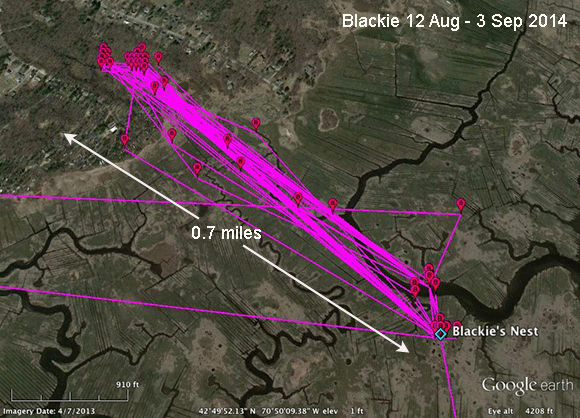 |
Pre-migration movement......or lack thereof. Blackie never went more than 0.7 miles from his nest between the day we tagged him (Aug 11) and the day before he started his migration on 4 Sep. It doesn't look like he even went out trying to fish, so we were pretty worried about him. Scroll down for more... |
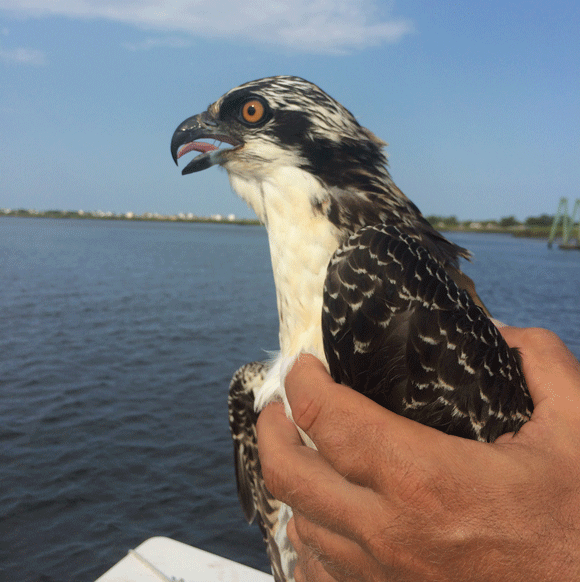 |
Blackie......is one of two young fledged on a marsh pole along Black Rock Creek, which feeds into the Merrimack at Salisbury Beach State Preservation, not far from the Massachusetts/New Hampshire border. His head is quite dark, which, along with the location of his nest on Black Rock Creek, gave us the idea for his name. He is a robust young male, weighing in at 1.38 kg, which translates to just over 3 pounds. |
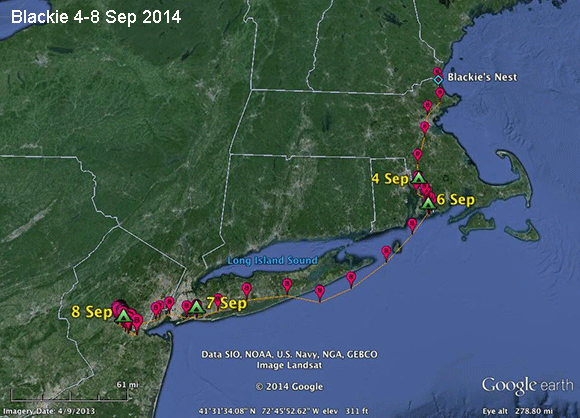 |
Migration beginsBlackie left his nest on the 4th of September and after moseying through eastern Rhode Island on the 5th and 6th, he pushed west and got to northern New Jersey on the 8th. As of October 6th, he's still on the Raritan River, now the furthest north of all our tagged birds. He must have been taking a correspondence course on fishing, because he's obviously successful.
|
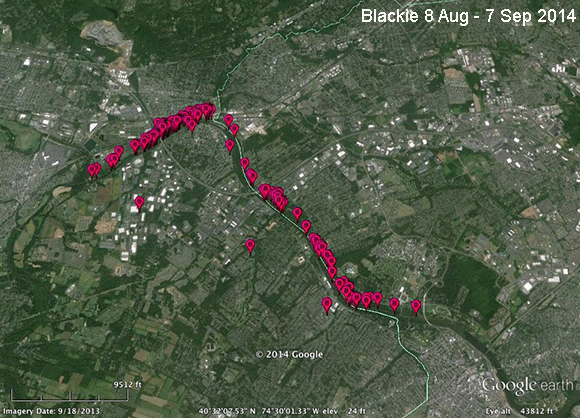 |
Migration stallsAs of 7 Oct, Blackie has been on the very narrow (about 80 yds wide) Raritan River. Maybe it looks like one of the tidal creeks around his nest up in Massachusetts. It's not unprecedented for one of our young to put migration on hold. Meadow, a Martha's Vineyard juvenile, settled down in Michigan until 15 Nov! |
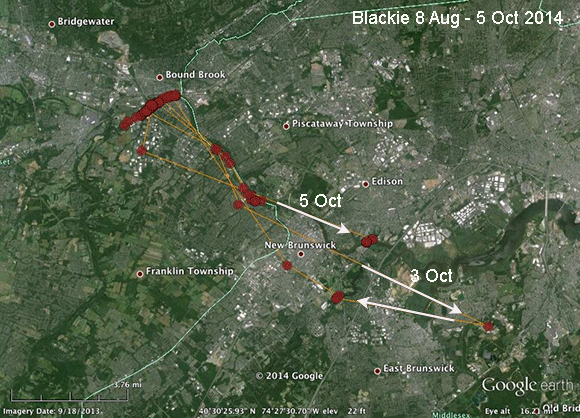 |
Another sad lossWe're not supposed to get emotional about our study subjects, but I can't help it. It appears we lost another juvenile. After almost 2 months on the Raritan River, Blackie made a move southeast on the 3rd, but retreated to his headquarters near Round Brook. On the 5th he ventured downriver again, but this time he appears to have met an untimely end. |
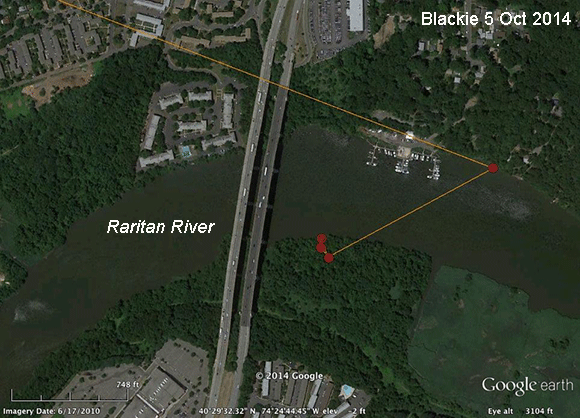 |
Another traffic fatality?We can't take this one to court, but I think we can make a compelling case that Blackie was hit by a car on the bridge over the Raritan. One thing we have documented with our study is that quite a few deaths are totally random--like being hit by a car or bus, or getting eaten by a Great-horned Owl. |